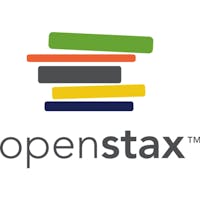Experts have predicted that artificial intelligence will replace nearly half the world’s workforce within the next fifteen years. They often follow that warning with the reassurance that leaving the automated tasks to machines will free up human labor for more creative projects. Yet, if we keep sidelining creativity in education, will the workers of tomorrow be prepared for that kind of work?
Today, more than ever, we need to take a comprehensive approach to nurturing creativity. The arts can play a big role in that endeavor, taking the features of a creative mentality often hidden behind closed doors and putting them on display, where we can all share them. Because of that, they offer a way to teach the basic tools of innovation.
As a composer teaching at Rice University, I offer a course titled Creativity Up Close that’s open to all undergraduates. The class alternates between discussions about the science of creativity and hands-on creative projects in oral history, music, engineering and visual art, mentored by faculty in those disciplines. One of the highlights is a “theme and variations” project.
In Western classical music, a “theme and variations” is based on a simple concept: a composer picks a theme and then repeats it as often as possible, each time in a new way. Inspired by that model, I ask my students to create variations on a poetry reading. The prompts mirror the musical models: each variation should present the entire poem; each should offer a unique way of transforming the text—for instance, by reading it faster or louder—so that no two variations are alike; and—as in the most adventurous sets—succeeding variations should get farther and farther away from the original, making it harder and harder to recognize.
The project teaches several crucial lessons about creativity. First, as neuroscientist David Eagleman and I discuss in our book “The Runaway Species,” creativity is a process of derivation and extrapolation: new ideas emerge by remodeling prior experience. People tend to hide their sources, but look closely at any innovation, and you will uncover its lineage. As the filmmaker Jean-Luc Godard has said, “It’s not where you take things from—it’s where you take them to.”
Second, the activity of proliferating options is a cornerstone of the creative process. For instance, the purpose of brainstorming is to generate an abundance of solutions. The more potential ideas we have to draw from, the richer the eventual creative output.
Third, highly inventive people typically don’t remain at a fixed distance from convention, but rather cover a range from the familiar to the far-out. That’s a strategy pursued by innovative companies as well. For instance, Timex regularly updates its classic wrist watches, keeps up with current trends with its fitness watches and also experiments with wacky ideas such as the “time at your fingertips” watch that fits on a fingernail. Similarly, Boeing recently upgraded the design of its flagship 737 while also rolling out new models such as the 787 Dreamliner and flight-testing an autonomous “air taxi” designed to shuttle passengers short distances without a pilot. These companies follow the same procedures as classical composers, creating a spectrum of variations. By diversifying their output, they can keep one eye on the present and one on the future.
The instructions I give are intended to be specific enough to convey these lessons but open-ended enough to give the students full creative license. I ask them to create at least four variations and tell them that they will be evaluated on how well they fulfill the prompts: Are there enough variations? Do they contrast with each other? Does each move farther away from the source? Emphasizing these more objective measures over subjective judgments gives the students the freedom to experiment and take risks.
The students produce artwork that is personal and unique—and at the same time, cultivates transferable tools of innovation. I picked a poetry reading as the seed for my “theme and variation” project, but the prompt is readily adaptable. Human minds are constantly creating variations on themes, from the latest sneaker lines, to the typefaces that brand our products and personalize our messages, to the twists on classic recipes, to the design of windows, doors, chairs, and eyeglasses. Instructors can pick any output that best fits their courses.
Back in 1819, the composer and publisher Anton Diabelli sent a waltz theme he’d written to a bunch of prominent composers, asking each to submit one variation, which he planned to publish in a group volume. Ludwig van Beethoven responded by writing thirty-three variations, ranging from playful reinterpretations to some of his most radical music.
We can teach our students to think like Beethoven, and we can encourage them to apply that mindset to everything that interests them. It is this kind of free-wheeling human enterprise that will advance culture and commerce as the machines labor away on the factory floor.
Care to offer feedback? Take our quick poll!
Having trouble viewing? Click here to see the poll full screen.



